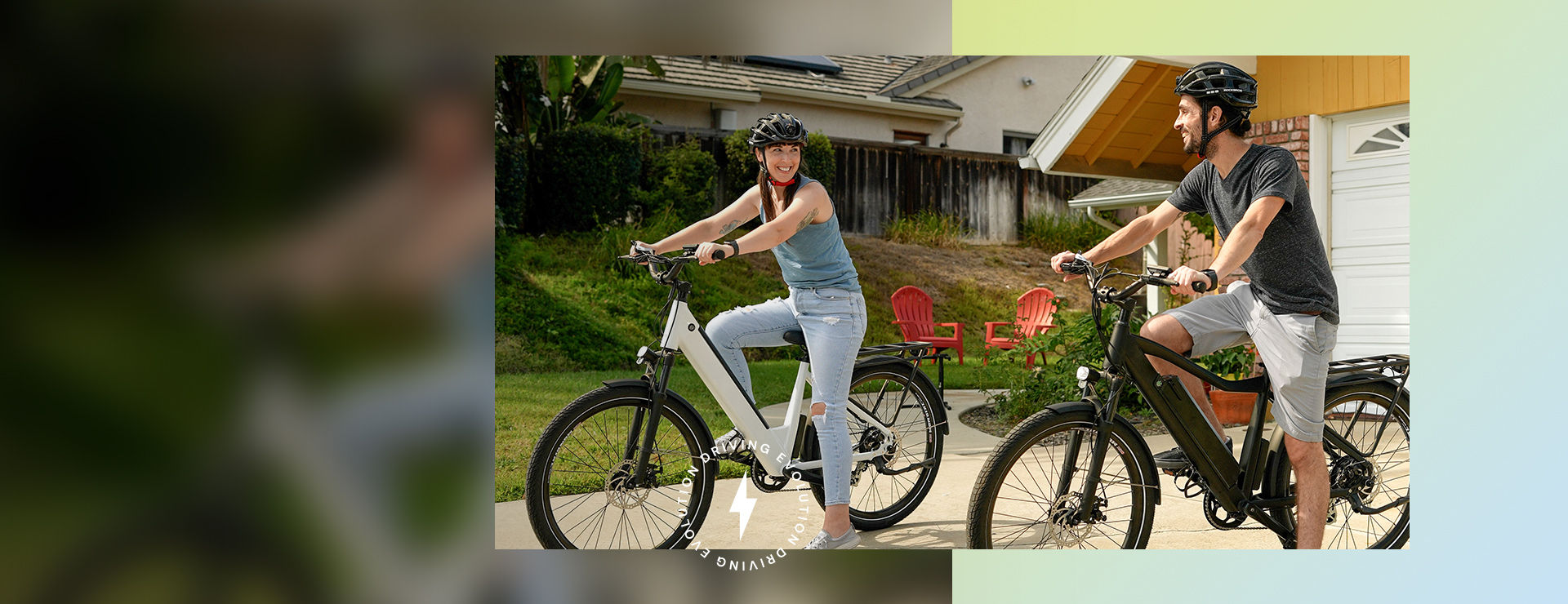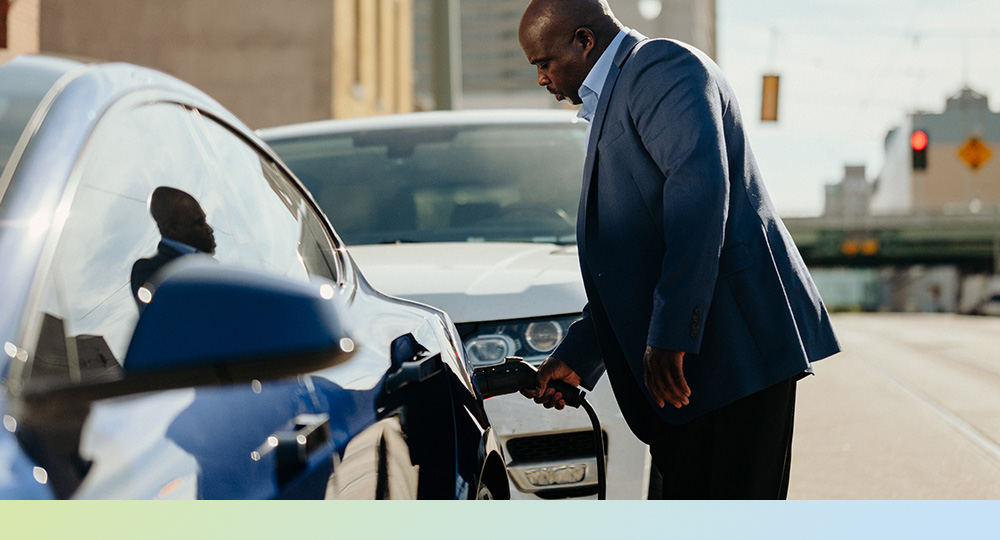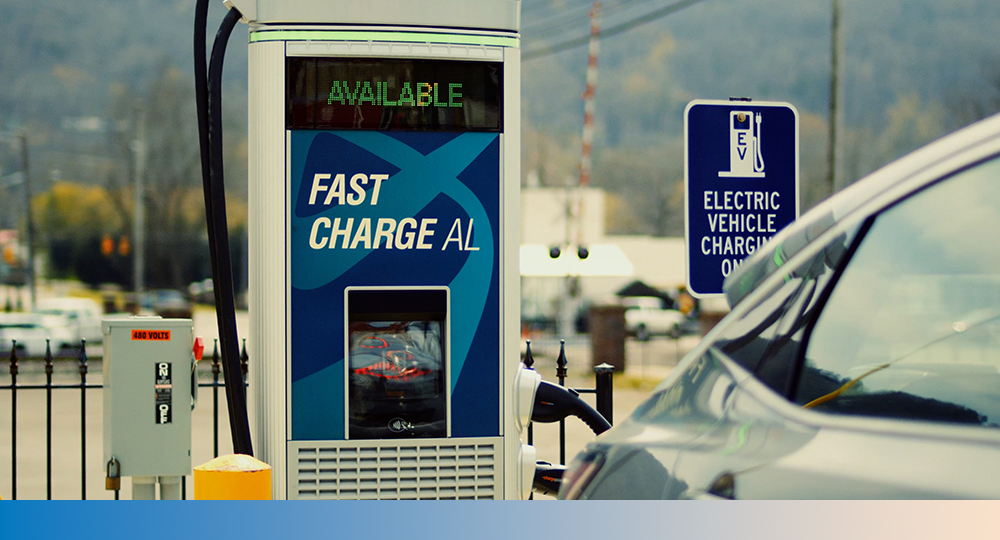How to choose an electric bicycle.

Pedal easy: How to choose an electric bicycle that works for you.
Thinking about upping your bike game? We’re ready to play … and help you choose an electric bicycle that fits your cycling style.
First, a few words about the e-bike classifications. Most bicycle manufacturers and state and local entities have adopted a three-class system for categorizing electric bicycles.
| Class 1 | Class 2 | Class 3 | |
| Pedal Assist | Yes | Yes | Yes |
| Throttle | No | Yes | No |
| Max Assisted Speed | 20 mph | 20 mph | 28 mph |
Class 1: Pedal-assist only. A motor provides assistance only when you’re pedaling. Motorized assistance cuts off when you reach 20 mph.
Class 2: Pedal assist + throttle. Pedal-assist up to 20 mph and a throttle-powered mode that does not require pedaling.
Class 3: Pedal assist only. Motorized assistance cuts off at 28 mph. Check local regulations regarding bike path and multi-use trail navigation.
If you’re ready to take the plunge and start whirling your way to work (or spinning to school), here’s what you need to know to choose an electric bicycle that’ll get the job done.
How to choose an electric bicycle that fits your pedaling style and experience.
How you ride, where you ride and what you hope to do with your e-bike all factor into which e-bike is best for you.
Class 1
Class 1 e-bikes are easy to use and feel a lot like riding a conventional bicycle. These bikes are great for newbie electric cyclists looking to get from point A to point B quicker and with a little less pedaling.
They also tend to be the most widely accepted e-bike from a regulatory standpoint. Because they top out at 20 mph and don’t feature a throttle, they’re generally permitted on bike paths, greenways and bike lanes.
Class 2
In addition to pedal assist, Class 2 e-bikes are also throttle-powered. Throttle assistance can come in handy on off-road trails or in hilly or mountainous regions. These bikes feel a bit like riding a moped and may be best for experienced e-bike riders because they tend to be faster and more powerful than Class 1 bikes.
Like Class 1 bicycles, Class 2 e-bikes top out at 20 mph; however, local municipalities may restrict their use on public, mixed-use paths.
Class 3
Feel the need for speed? Class 3 e-bikes provide the experienced rider with pedal assistance up to 28 mph. These faster and more powerful bikes are quite popular amongst the adventure-riding set, commuters who like to keep up with traffic, or errand runners carrying heavier loads.
Again, we recommend that you check your local regulations about where Class 3 bikes can be ridden: If you live in Tennessee or Alabama, for example, you should know that Class 3 bikes are prohibited on bicycle paths or greenway trails.
SOURCES: REI.com, Consumer Reports, Greenways for Nashville, Casetext.com
Choose an electric bicycle that suits your style
Just as you would when purchasing a conventional bike, you’ll want to start your search by narrowing the field. So how do you choose an electric bicycle that suits your style? It’s easy! And we’ll help you find a bike you like.
Electric mountain bike
Mountain bikes are extremely versatile. They excel off-road and on-trails, but they ride great on the road, too. Mountain bikes tend to have wider tires for added stability and a more relaxed geometry and sophisticated suspension for greater comfort. They are, however, heavier than road bikes and slower on paved surfaces than road or hybrid bikes.
Electric cruiser bikes
What’s a cruiser bike? Conjure up a picture of Almira Gulch (AKA the Wicked Witch of the West) pedaling away with poor Toto and you’ll be on the right path. Also known as beach cruisers, these e-bikes are made for recreational riding and comfortable cycling. Or, if you’re a nasty witch, dognapping.
Electric fat bikes
Like cruiser bikes, fat bikes are made for fun and comfort. However, thanks to their fat 4-inch plus tires, they ride well in loose soil, sand or even snow. These big boys come in a range of styles from foldable to full-on cruiser.
Electric road bikes
We’re going to commit cycling blasphemy here, but for the sake of simplicity, we’re including hybrid bikes, road bikes and racing bikes in this category. Typically road bikes have a body-forward, lean-in geometry, narrower saddles and no suspension. These bikes are easy to maneuver, are lighter than mountain bikes or cruisers, and can be easily ridden without any e-assist at all. Perfect for folks who just want a little help on the hills.
Electric cargo bikes
The minivan of the e-bike world, these bikes are great for hauling groceries, kids and pets. Electric cargo bikes may not be able to go as fast as other types of e-bikes, but if you want to reduce your carbon footprint while hauling a lot of stuff, cargo e-bikes are the way to go. (And let’s be honest, they’re way cooler than a minivan.)
Electric folding bikes
Tight on space? These clever conveyances fit neatly in the trunk of your car, snuggle safely in the luggage compartment of a commuter train, or tuck tidily behind the door of your office. If space is at a premium, a folding e-bike may be just the ticket. However, we should note that folding bikes may not ride as smoothly as conventionally sized bicycles.
As you home in on the type of bike you’d like, you’ll want to start reading reviews from editorial-vetted teams like those from Bicycling magazine, Cycling Weekly and Tom’s Guide to get a better sense of cost and quality.
What’s your e-bike budget?
Generally speaking, Class 1 e-bikes are the most affordable, and you can find a very good electric bicycle for under $1,500. (Although a quick trip to Craigslist or Facebook Marketplace reveals deals to be had on all classes of e-bikes.) Class 2 and Class 3 bikes tend to be more expensive and high-end e-bikes can cost $6,000 or more.
When you factor in how much you can save on gasoline, rideshare fares and parking, an electric bike’s price tag becomes a lot less daunting. Before you take the plunge, check for federal, state, or local rebates or incentives on ebikes.
Where should you buy an electric bicycle?
Ready to ride! It’s time to choose an electric bicycle! You can buy one online, of course, but if you’re new to the e-bike world, consider making a trip to a local bike shop. Generally speaking, bike shop staff will be more than happy to answer all your questions and help you choose an electric bicycle that’s right for you.
Plus, when you buy local, you’ll be able to take several models and styles of e-bikes for a test drive and find the one you like best. Once you’ve made your decision, they’ll even make sure that the bike is correctly fitted to you, making adjustments to the seat and handlebars as necessary. For the best service, look for a local shop that specializes in e-bikes or sells e-bikes exclusively.
Why should you buy an electric bicycle?
Piloting an e-bike can make riding over the region’s hills easier and help you get from point A to point B more quickly and efficiently. Electric bikes may be a good choice if you have knee injuries or struggle with respiratory problems or other health issues. (Be sure to speak with your doctor before pedaling off on your new e-bike, though!)
Don’t forget the gear!
E-bikes are fun, fast and fabulous but because they’re faster, they can be riskier to ride than a conventional bicycle. That’s why adding high-quality protective equipment to your shopping cart is essential.
Here’s what you’ll need:
- A helmet that fits snugly over your noggin is a no-brainer. It shouldn’t slip from side to side or tilt forward or backwards as you’re moving. For extra safety, look for a reflective helmet for top-to-bottom nighttime visibility.
- Stand out with brightly colored, reflective clothing; long sleeves and long pants are highly recommended.
- For a stronger grip on the handlebars, consider a pair of cycling gloves. They may also help protect your paws in the event of a fall. While you’re at it, toss in some elbow and knee pads.
- Extra lights and reflectors. Some e-bikes may come equipped with lights and reflectors but the more the merrier!
- Don’t forget the bells, flags, and whistles. Safety flags seem very 1983, but they increase visibility. Horns and bells can help alert those around you to your approach.
Riding an e-bike is a great way to save on gasoline, get your daily dose of activity in and give the environment a break by keeping your car parked. Just make sure you follow the rules of the road and ride safely out there! We hope our “How to choose an electric bicycle” guide helps get you rolling in the right direction.
About our EV blogs: We know that big changes – like purchasing a vehicle that runs on electricity instead of gasoline – can lead to big questions. And that’s why we’re doing our best to provide expert, unbiased answers to your pressing EV questions. Each of our posts will include links to trusted external sources like automotive magazines, thought leaders, research-backed studies, government agencies and more. Feel free to click around!
DISCLAIMER: No TVA endorsement of any specific vehicle, car manufacturer, electric charger or other equipment is intended or implied. This site’s content (including, without limitation, references and links to third-party information) is based on information provided at the time of publishing, and TVA makes no warranty therein.



